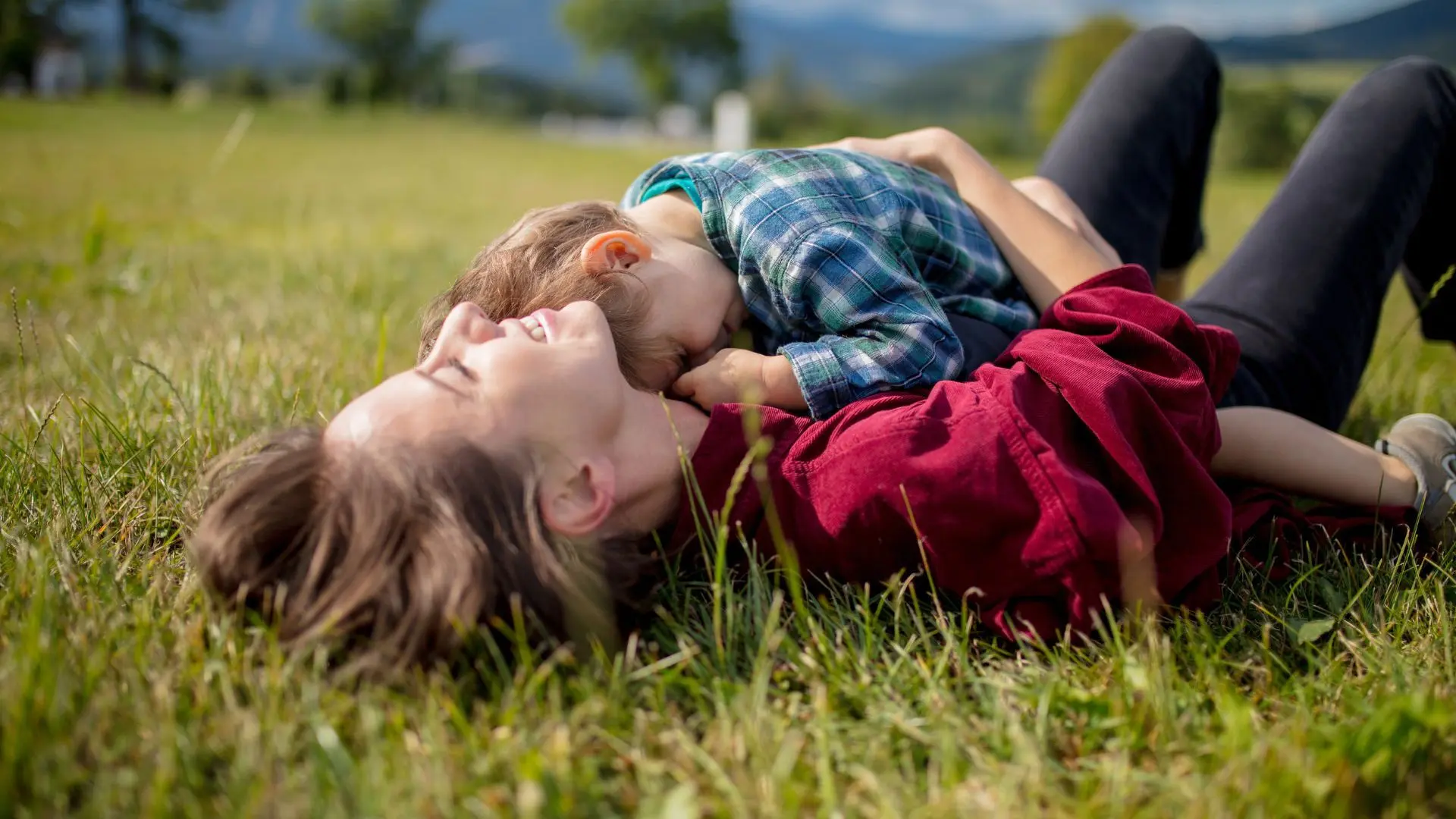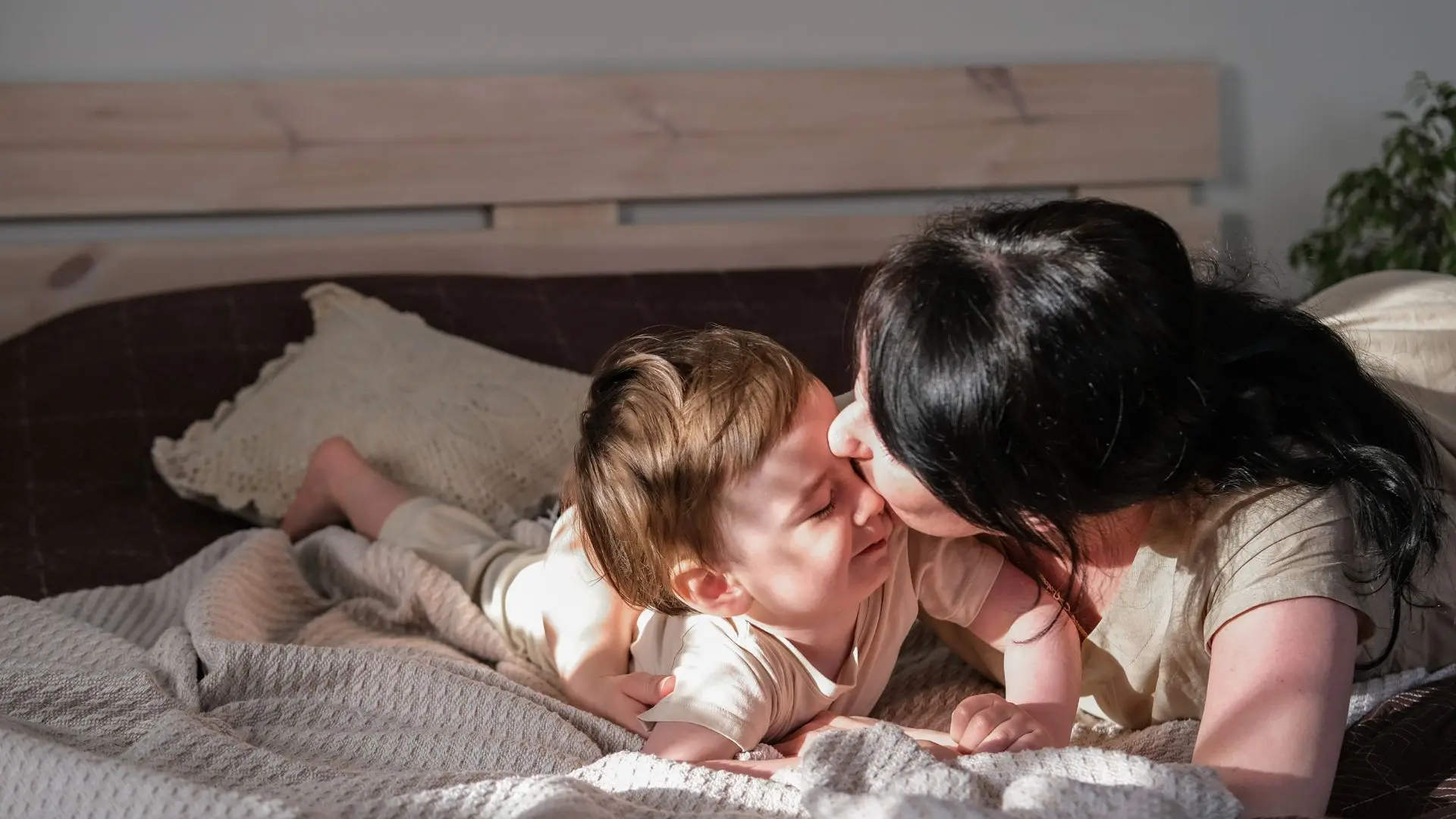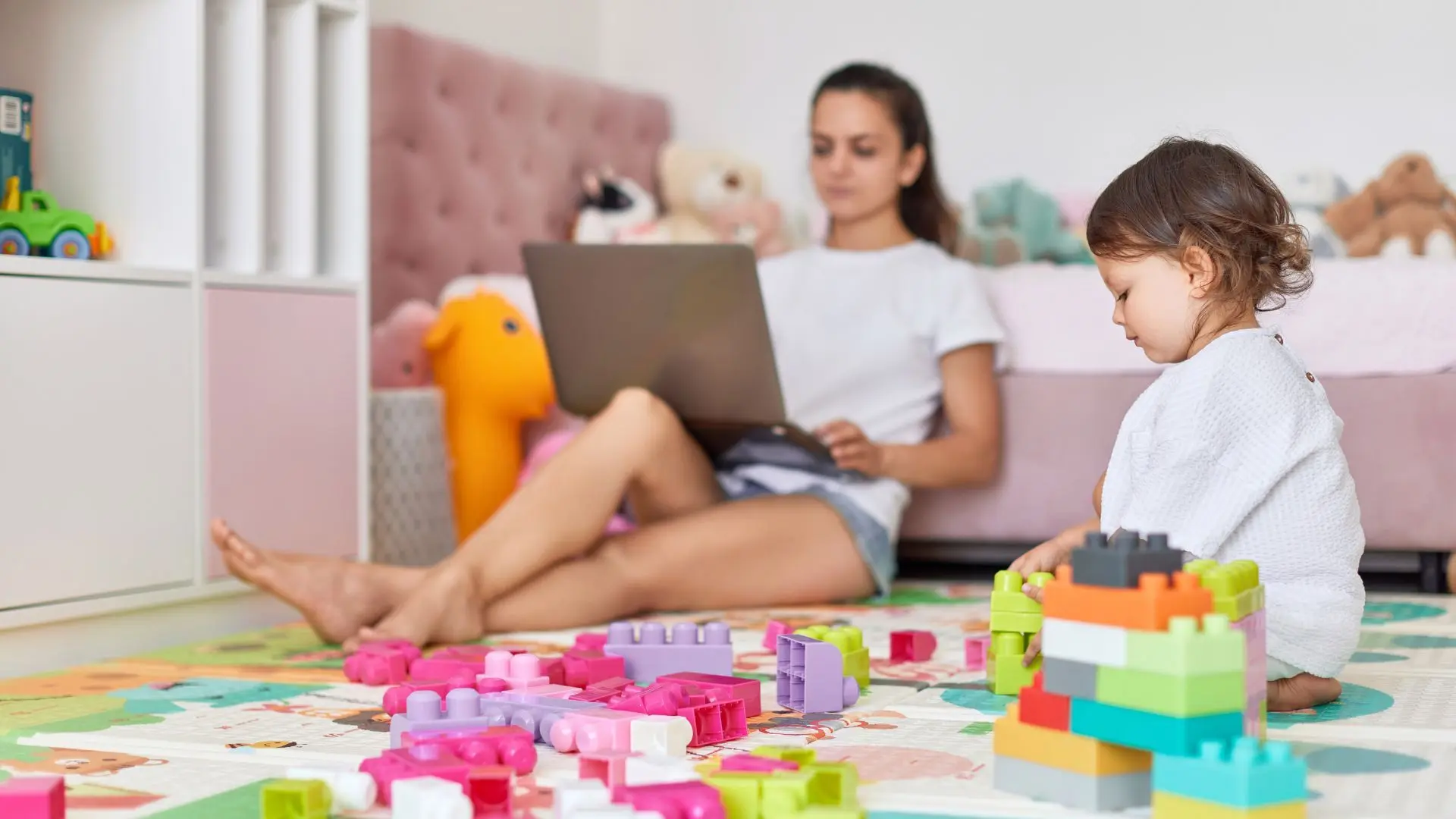Is your attachment parenting strategy working? Learn how to identify secure attachments with clear signs and improve your child’s emotional security today.

When it comes to raising a child, the way we approach parenting can deeply influence their emotional and psychological development. For many parents, attachment parenting is a cherished approach, emphasizing close physical and emotional connections to foster a secure bond.
But how do you truly know if your attachment parenting style is hitting the mark? Are you building a foundation of trust and security, or could your methods be unintentionally causing stress or confusion?
See how attachment parenting impact on your child’s sense of security. And know key signs that your parenting style is either nurturing a healthy, secure attachment or, conversely, contributing to potential insecurities.
So, you can better align your parenting practices with your child’s emotional needs, ensuring a strong and supportive relationship that sets the stage for their future well-being.
What is Attachment Parenting?
Attachment Parenting is a parenting approach focused on creating a strong, emotional bond between a parent and their child. It emphasizes responding sensitively to a child’s needs, fostering close physical proximity, and nurturing a secure relationship.
This method includes practices like extended breastfeeding, co-sleeping, and responsive caregiving, aiming to support the child’s emotional and developmental needs through consistent and empathetic interaction.
Signs of Secure and Insecure Attachment Parenting
Understanding the signs of secure and insecure attachment can provide valuable insights into your child’s emotional health. Let’s break down these signs so you can better assess your attachment parenting approach.
Signs of Secure Attachment
A securely attached child exhibits several key behaviors that reflect their strong emotional bond with their caregivers:

- Seeking Comfort from Caregivers: When your child is upset or frightened, they instinctively turn to you for comfort. This behavior shows they trust you to provide safety and reassurance.
Example: If your toddler falls and cries, they come running to you for a hug and reassurance, demonstrating their reliance on you for emotional support.
- Positive Reactions to Separation and Reunion: Securely attached children show distress when separated from their primary caregivers but exhibit joy and warmth upon reuniting.
Example: After a day apart, your child greets you with excitement and runs into your arms, eager to reconnect.
- Using Caregivers as a Secure Base: They feel confident exploring their environment, knowing they can return to you for support and comfort.
Example: At a playground, your child plays and interacts with other kids but frequently checks in with you, feeling secure in their exploration.
- Emotional Regulation and Resilience: Securely attached children manage their emotions well and are better equipped to handle stress and challenges.
Example: When faced with a frustrating task, your child takes a deep breath and tries again, demonstrating their ability to handle setbacks calmly.
- Empathy and Cooperative Play: They show empathy toward others and engage positively in cooperative play, reflecting their healthy attachment and social skills.
Example: During a group activity, your child helps a peer who is struggling, showing their ability to understand and respond to others’ emotions.
Signs of Insecure Attachment
Insecure attachment can manifest in various ways, affecting how children interact with their caregivers and peers:

- Avoidant Attachment: Children with avoidant attachment show little distress when separated from their caregivers and may lack interest in forming close bonds.
Example: Your child might not show much reaction when you leave for work and appear indifferent upon your return.
- Ambivalent Attachment: Ambivalent children exhibit high levels of anxiety when separated and may be clingy. They might also show ambivalence or aggression towards caregivers upon reunion.
Example: Your child clings to you during drop-off at school, displaying distress and reluctance to let go, and becomes upset or irritable when you pick them up.
- Disorganized Attachment: This style is characterized by fear and confusion when interacting with caregivers. Children might display erratic or aggressive behavior and have trouble self-soothing.
Example: Your child might react with fear or aggression when approached, showing an inconsistent response to your attempts to comfort them.
Impacts on Children
The style of attachment established in early childhood can have profound effects on a child’s present behavior and future development. Let’s explore these impacts in detail.

Present Impacts
Secure Attachment
Enhanced Emotional Stability: Children with secure attachment are generally more emotionally stable, handling stress and challenges with greater ease.
Better Social Skills: They develop strong interpersonal skills and form positive relationships with their peers, fostering a sense of belonging and cooperation.
Greater Self-Esteem: Confidence in their abilities and a sense of security contribute to a healthy self-image.
Healthy Behavioral Patterns: They are less likely to exhibit behavioral problems and more adept at regulating their impulses.
Increased Curiosity and Exploration: A sense of security encourages them to explore their surroundings and learn from new experiences.
Insecure Attachment
Emotional Instability: Insecurely attached children may struggle with emotional regulation, leading to mood swings and heightened anxiety.
Social Challenges: They might face difficulties in forming and maintaining healthy relationships, experiencing issues with trust and social interaction.
Lower Self-Esteem: Feelings of insecurity and self-doubt can undermine their confidence and self-worth.
Behavioral Problems: Increased risk of behavioral issues, such as aggression or withdrawal, can be observed.
Fear of New Experiences: Hesitation or reluctance to explore new situations can limit their learning opportunities and personal growth.
Future Impacts
Secure Attachment
Stronger Resilience: Securely attached children grow into adults who handle setbacks and adversity with greater resilience.
Positive Relationships: They tend to form and maintain healthy, trusting relationships throughout their lives.
Emotional Intelligence: An ability to understand and manage emotions effectively contributes to better interpersonal interactions and self-awareness.
Healthy Coping Mechanisms: They develop effective strategies for dealing with stress and challenges, leading to overall better mental health.
Success in Personal and Professional Life: Their strong relational foundations often translate into success in both personal and career pursuits.
Insecure Attachment
Increased Risk of Mental Health Issues: Adults with insecure attachment styles are more likely to experience mental health disorders, including anxiety and depression.
Difficulty with Intimacy: Challenges in forming close, trusting relationships can affect personal and professional relationships.
Struggles with Emotional Regulation: Persistent issues with managing emotions can lead to ongoing difficulties in various aspects of life.
Relationship Challenges: Frequent conflicts and challenges in establishing stable, supportive partnerships can occur.
Potential for Behavioral Problems: Persistent behavioral issues may continue into adulthood, affecting personal and professional life.
What Parents Should Do
Fostering secure attachment in your child requires intentional, responsive parenting. Here’s what you can do to support your child’s emotional development and strengthen your bond:

Fostering Secure Attachment
- Be Consistently Responsive
- Respond promptly and predictably to your child’s needs. Whether they need comfort, a meal, or simply a hug, showing that you are reliably available builds trust and security.
Example: If your child wakes up in the middle of the night, soothe them quickly and calmly to help them feel safe and secure.
- Provide Physical Affection
- Regular physical affection, such as hugs, kisses, and cuddles, reinforces emotional bonds and reassures your child of your love and presence.
Example: Make it a habit to give your child a goodnight hug and kiss every evening, creating a comforting bedtime routine.
- Practice Active Listening
- Give your child your full attention when they are sharing their thoughts and feelings. Validate their emotions and experiences, showing that their feelings matter.
Example: When your child talks about their day at school, listen actively and engage in the conversation, showing genuine interest and empathy.
- Spend Quality Time Together
- Dedicate time to engage in activities that your child enjoys. Quality time strengthens your relationship and helps your child feel valued and connected.
Example: Plan regular family outings, such as picnics or nature walks, to enjoy time together and create lasting memories.
- Encourage Independence
- Support your child’s efforts to explore and learn on their own while providing a secure base for them to return to. This balance promotes confidence and resilience.
Example: Allow your child to try new activities, like riding a bike or starting a hobby, while being available to offer encouragement and support.
- Set and Enforce Boundaries
- Establish clear, fair rules and consistently enforce them. Predictable boundaries help your child feel secure and understand expectations.
Example: Set consistent bedtime routines and explain the importance of following them, helping your child feel a sense of stability.
- Seek Social Support
- Engage with a supportive community of family, friends, and professionals. Sharing experiences and seeking guidance can enrich your parenting approach.
Example: Join a parenting group or seek advice from a child development expert to gain insights and support for your parenting journey.
Addressing Insecure Attachment
If you recognize signs of insecure attachment in your child, it’s crucial to address them thoughtfully to support their emotional development and strengthen your relationship. Here are some strategies to help:
Acknowledge and Validate Feelings
Recognize and validate your child’s feelings of insecurity or distress. Avoid dismissing their emotions, and instead, provide reassurance and support.
Example: If your child is fearful of being away from you, acknowledge their fear and offer comforting words, ensuring them that you will always come back.
Gradually Increase Separation
If separation anxiety is an issue, gradually increase the time your child spends away from you in a supportive manner. This helps them build confidence and trust in their ability to handle separations.
Example: Start with short separations, like leaving them with a trusted caregiver for brief periods, and gradually extend the time as they become more comfortable.
Create Predictable Routines
Establishing consistent routines can help provide a sense of stability and predictability for your child, which is particularly beneficial if they struggle with anxiety or fear.
Example: Develop a daily routine for activities such as mealtimes, bedtime, and transitions, providing your child with a sense of structure and security.
Work on Building Trust
Consistently follow through on promises and be reliable in meeting your child’s needs. Building trust takes time, so patience and consistency are key.
Example: If you promise to attend a school event or activity, make sure to follow through, reinforcing your child’s confidence in your dependability.
Encourage Open Communication
Create a space where your child feels safe to share their thoughts and emotions openly. Open communication helps address insecurities and fosters a stronger emotional connection.
Example: Have regular conversations with your child about their experiences and emotions, creating a safe space for them to share their concerns and feelings.
Seek Professional Guidance
If your child’s attachment issues are severe or persistent, consider seeking support from a child psychologist or counselor who specializes in attachment and emotional development.
Example: A family therapist can provide strategies and interventions tailored to your child’s specific needs, helping to address attachment issues more effectively.
Conclusion
Attachment parenting is a journey of understanding, patience, and love. By recognizing the signs of secure and insecure attachment and taking proactive steps, you can profoundly impact your child’s emotional well-being and future development. Remember, every child is unique, and your consistent, responsive parenting can create a strong foundation for their growth.
How have you navigated attachment parenting in your own journey? I would love to read your comments.
You may also be interested in : 20 Parenting Hacks to Raise Confident and Resilient Problem-Solvers